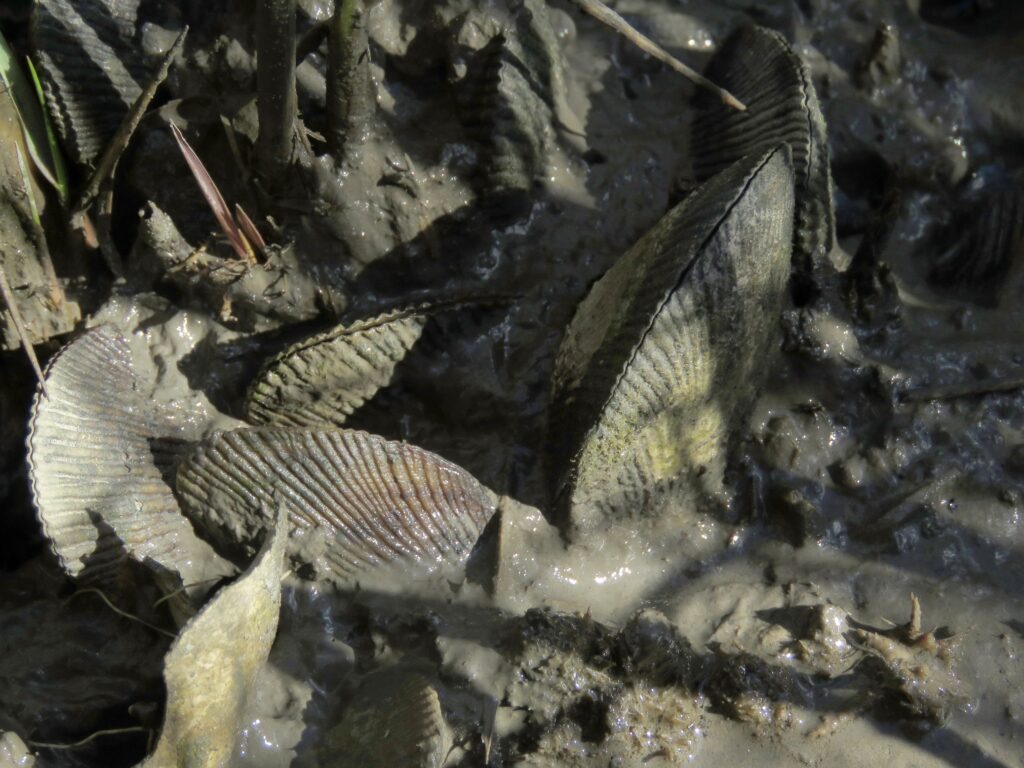

This week for Flora and Fauna Friday it’s our other mud-loving, tidal bivalve, the Atlantic Ribbed Mussel (Geukensia demissa).
Atlantic Ribbed Mussels live throughout our tidal estuaries on Edisto Island. They range in size up to four inches in length and have a thin-walled, sandal-shaped shell that’s a dark-green-brown and striped with fine, longitudinal ribs. Ribbed Mussels inhabit the low saltmarsh, attaching themselves as larvae to base of Smooth Cordgrass stalks. Overtime, many coalesce and grow into small clusters and, as they grow larger, they can bury themselves partially in the pluff-mud. Unlike Oysters and Barnacles, Atlantic Ribbed Mussels don’t permanently join their shells to the structure they attach to. Instead, these Mussels grow flexible fibers from the rear of their shell that can glue it to grass, wood, shell, or rock. If they become dislodged, they can reattach themselves to a new surface. Mussels are filter feeders, just like Oysters, and play an important role in filtering run-off, sequestering pollutants, and stabilizing sediment in our saltmarshes. However, Ribbed Mussels don’t get the recognition they deserve due to their invisibility, as it’s hard to notice a brown mollusk half buried in mud, submerged in saltwater, underneath a great expanse of grass. Also they don’t get much press because they’re not a culinary delicacy. Atlantic Ribbed Mussels are edible but hard to collect and not always safe to eat. They’re generally risky to eat in the modern world due to their ability to sequester chemical pollutants filtering through the saltmarsh. Also, even in pristine waters, it’s recommended to harvest them only at hide-tide, given that they can concentrate waste and environmental toxins inside their watertight shell during low-tide. Given all those caveats, I think we’re better off leaving the Mussels be and enjoying the other bounties of the sea. They’ve got an important job to do.